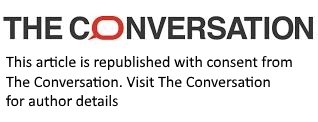New research shows the term ‘lesbian’ is declining in popularity. The reasons why are complex
- Written by Julie Mooney-Somers, Associate professor, Qualitative Research in Health; Director Master of Public Health, University of Sydney
Run your eyes down a list of famous women who have recently come out and you’re likely to see people describe themselves as pansexual, bisexual or queer, or insist on their right not to label their sexuality at all. With one or two notable exceptions, you’d be forgiven for thinking the word “lesbian” has gone out of fashion.
New research conducted by the University of Sydney and community health organisation ACON confirms the label has declined in popularity over the past decade. In 2014, 69% of respondents to the SWASH survey described themselves as lesbian. In 2020 51% did so.
Results of the 2024 survey, due to be released in the new year, will show the downward trend has continued: just 38% of 1,436 non-heterosexual women surveyed in 2024 chose the label “lesbian”.
What accounts for this change?
Lesbian+
In 2020, the Australian Bureau of Statistics updated its guidance for government agencies asking people about their sexual orientation. The ABS standard recommends people be instructed to pick only one sexuality label when filling out surveys.
Yet a significant proportion of SWASH survey respondents have always ticked multiple boxes. When the survey went online due to the pandemic, we formally allowed respondents to select multiple identity labels. The result? In 2024, 27% of 1,436 women choose more than one sexuality label.
When researchers allow more flexibility, a more complex picture than simply declining popularity emerges. While 38% only ticked lesbian in SWASH 2024, 55% ticked lesbian or lesbian plus another label (e.g. lesbian and queer).
While the number of people who primarily identify as lesbian might have declined, lesbian remains an important label for over half of the women surveyed.
What other labels do women chose?
Of the remaining respondents in the 2024 survey, 18% ticked only queer (with 42% queer or queer plus something else), 15% ticked only bisexual (28% bisexual or bisexual plus something else), and 2% ticked another label.
Results from a 2019 national survey of LGBTQ people aged 14 to 21 year suggest the trend away from “lesbian” is more pronounced for young people: 45% of cisgender women identified as bisexual, 19% lesbian, 10% pansexual, 7% queer, 4.5% asexual and 10.7% “something else”.
The survey found lesbian was more popular among young trans women (23.6%), where it sat alongside pansexual (23.6%) as one of the most common labels.
Interestingly, Australian research from 2019 shows non-heterosexual, cisgender men are far less likely to identify as bisexual or pansexual than non-heterosexual cisgender women. This difference may reflect narrower community norms about sexual desire, behaviour and identity for cisgender men.
Read more: Explainer: what does it mean to be 'cisgender'?
It is not uncommon for women to choose different labels across their life course. A long-running Australian study of women born between 1989 and 1995 found 30% had changed their sexual identity label at least once during the four times they were surveyed.
These changes may reflect a woman’s current relationship context, her comfort with available labels, or changes in her experience of her sexuality. We know from Australian and British research that there are often differences between how women label their sexuality and their sexual behaviour or experience of attraction.
Same sex, different label?
Since the 19th century, we have seen sex, desire and pleasure as a neatly aligned bundle of experiences connected to a person’s identity. We started to label these bundles “homosexual” and “heterosexual” (although the exact meaning of those terms has changed over time).
Sex, desire and pleasure are complex phenomena, however, and lots of different stories can be told about them.
Indeed, at different historical junctures very different stories have been told. Historian Valerie Traub argues that in early modern times in England and France, the primary medical and legal frameworks for understanding sex between women focused on very specific (penetrative) sexual acts, rather than seeing those as connected to desire, attraction, romance or sexual “orientation”.





